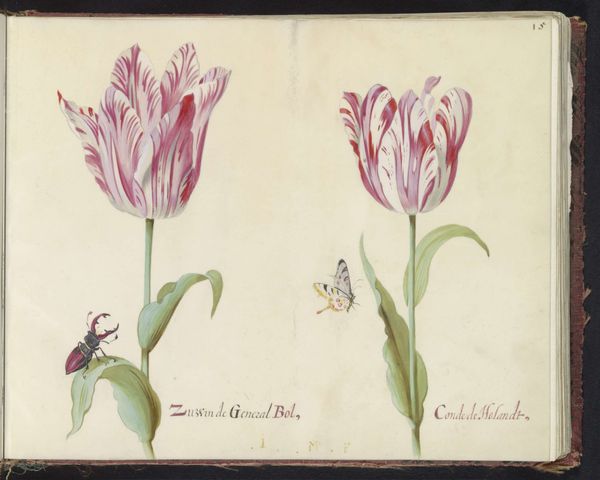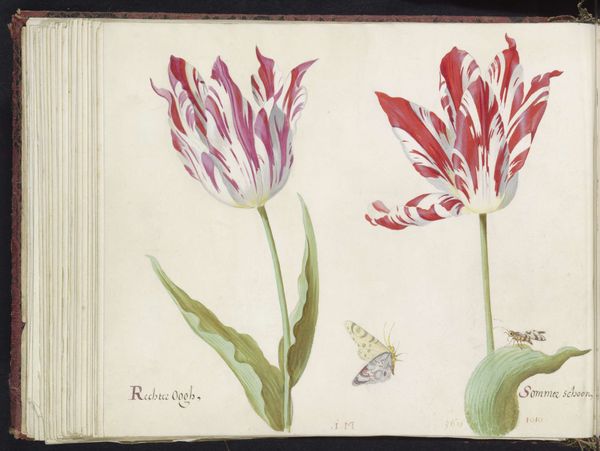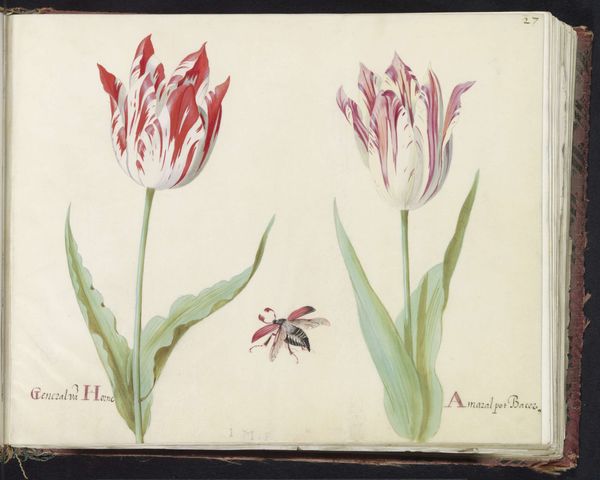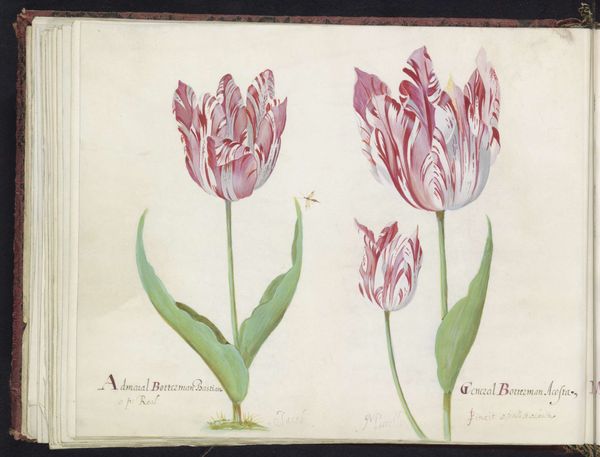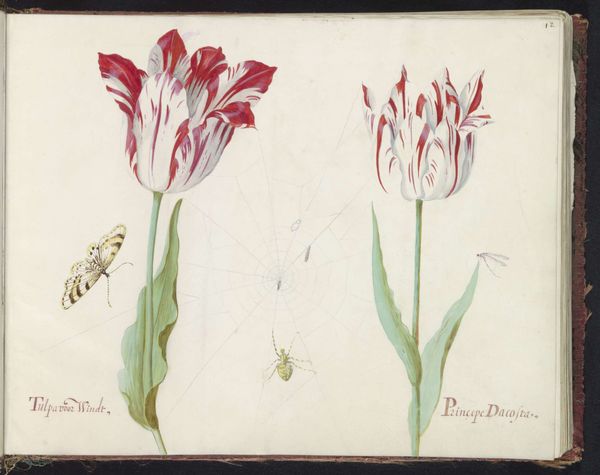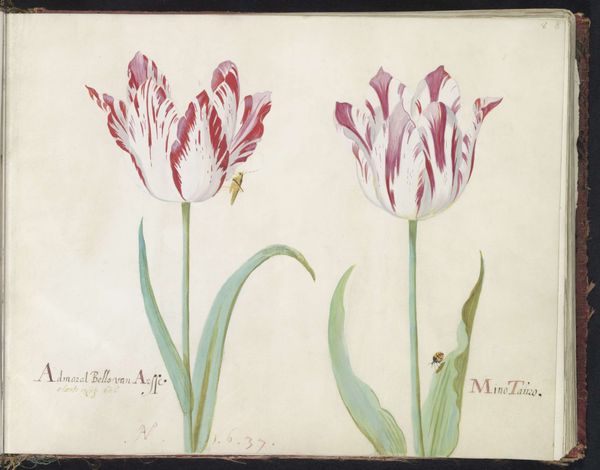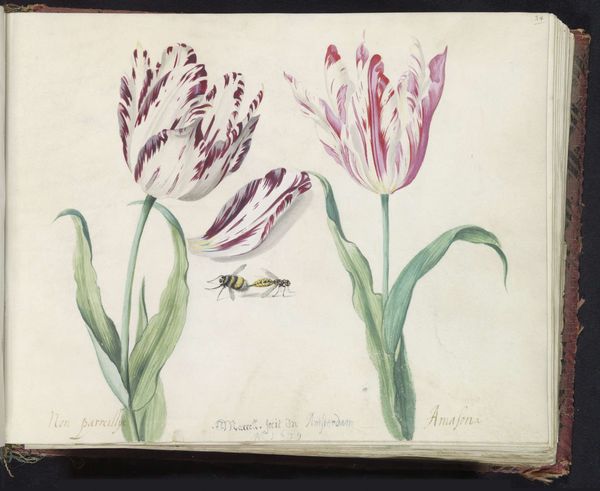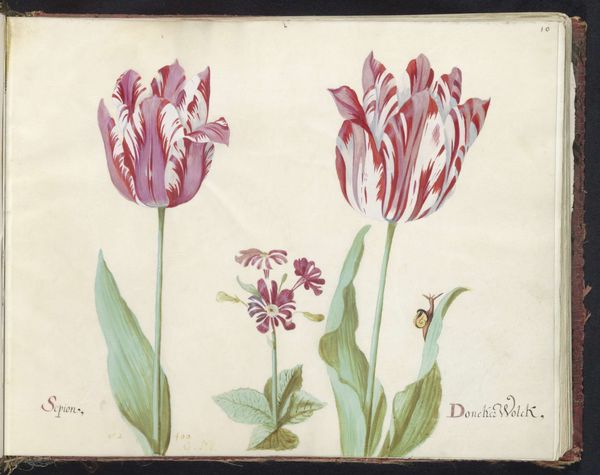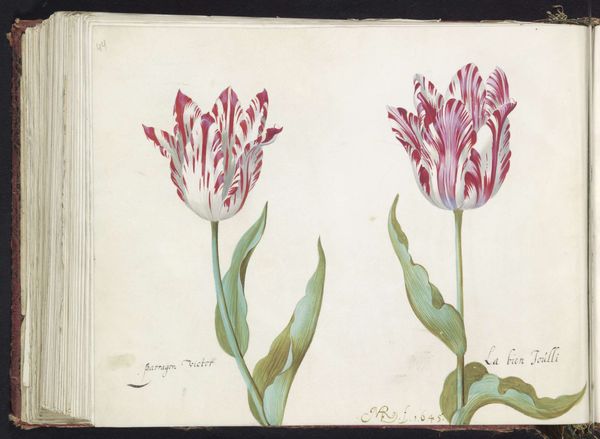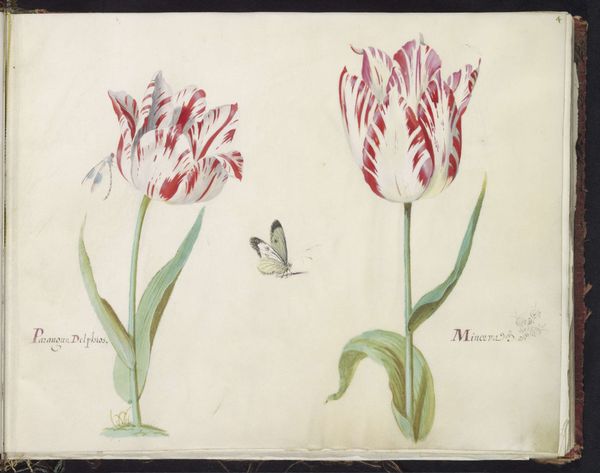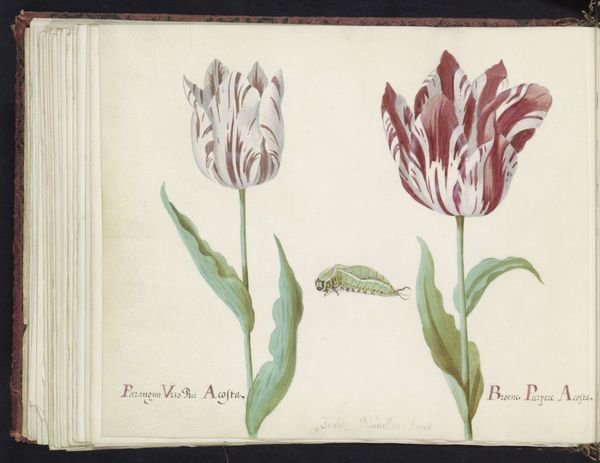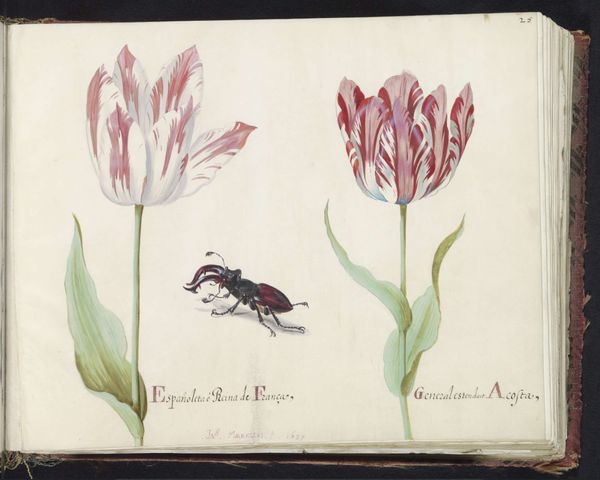
painting, watercolor
#
portrait
#
dutch-golden-age
#
painting
#
watercolor
#
watercolour illustration
#
botanical art
#
watercolor
#
realism
Dimensions: height 265 mm, width 335 mm
Copyright: Rijks Museum: Open Domain
Editor: This watercolor, titled "Two Tulips with Butterfly," was painted by Jacob Marrel around 1637. It’s striking how the red streaks pop against the white petals. What is your perspective on this piece? Curator: The structure is rather compelling, isn’t it? Note how Marrel utilizes the white space to frame the tulips. This choice emphasizes the intricate details of their forms and allows the eye to focus on the variations in color and texture. The butterfly provides a small focal counterpoint and emphasizes through contrast the formal properties of the flowers. Editor: So you're saying that the empty background and even the inclusion of that single butterfly are all about directing our attention to the tulips themselves? Curator: Precisely. It minimizes distractions, allowing the tulips’ linear elegance to take center stage. Notice also the nuanced gradients within the red streaks. How do these color gradations play a part? Editor: I see that they almost create an internal structure, giving each petal depth and making them look three-dimensional. They define the form without needing strong outlines. Curator: Yes. Marrel’s careful manipulation of light and shadow transforms flat paper into what feels like tangible form. Do you also observe how the symmetry inherent to tulips as a species, gives the image balance? Editor: That’s true, the butterfly complicates that somewhat, which is intriguing! I hadn’t really thought about botanical art in terms of its formal properties before, but you’ve given me a lot to consider. Curator: Likewise. It’s always fruitful to reconsider familiar objects and analyze the arrangement of forms and compositional structures of visual media.
Comments
No comments
Be the first to comment and join the conversation on the ultimate creative platform.
